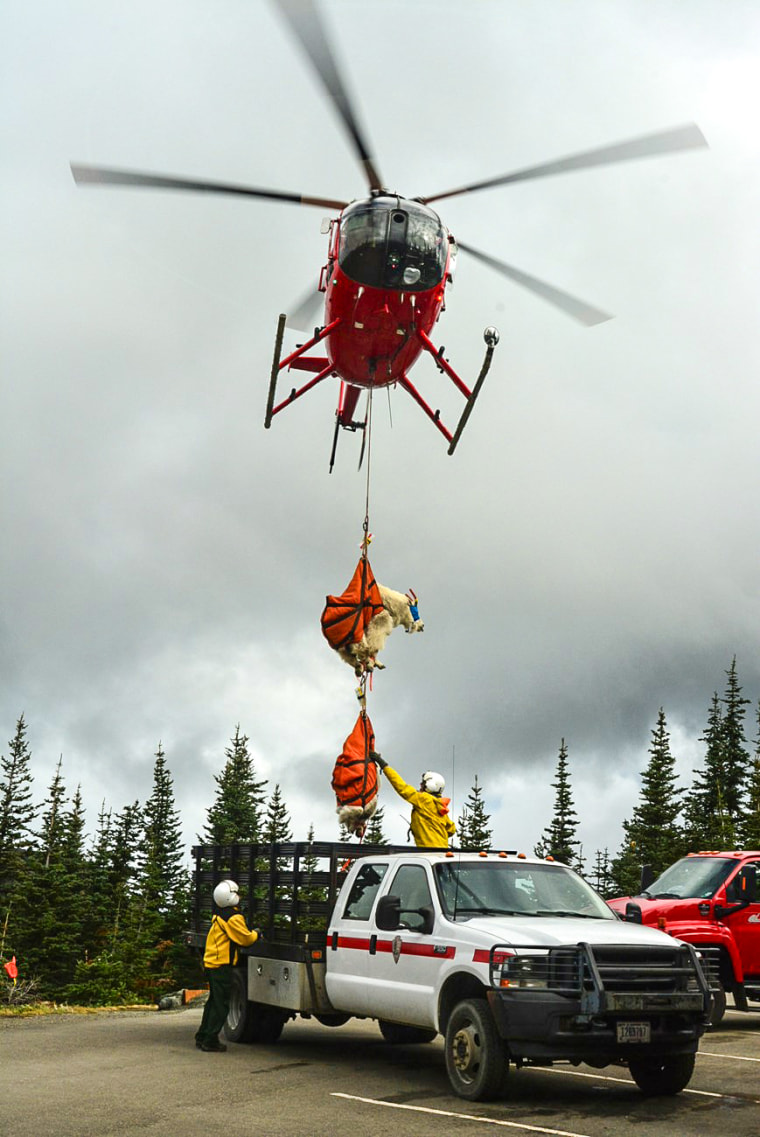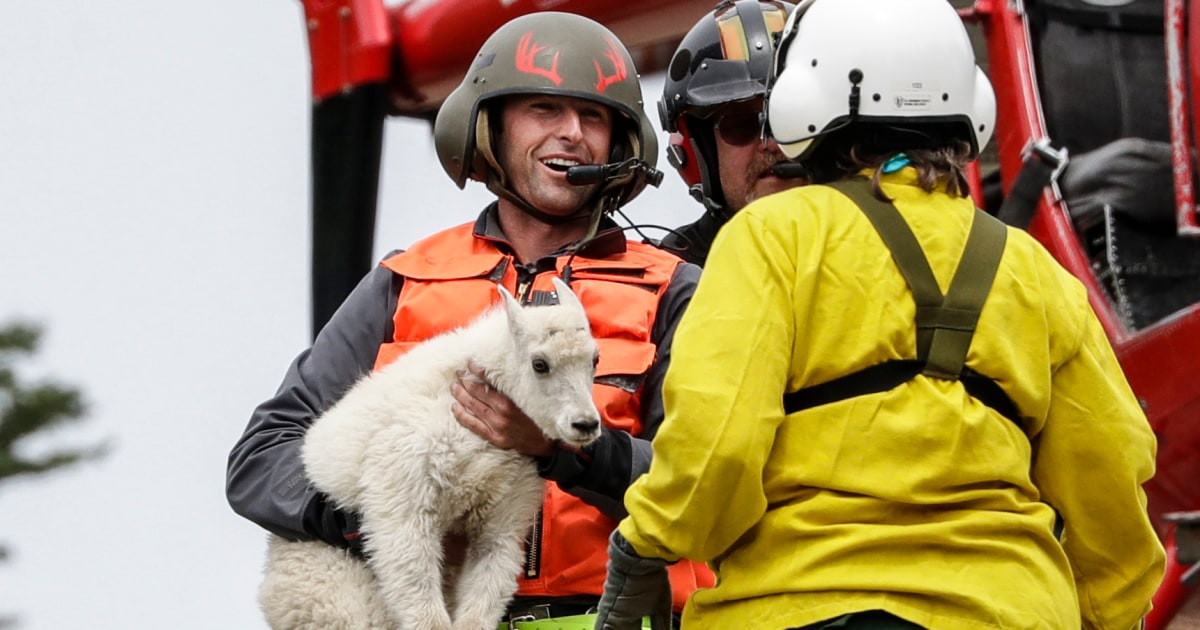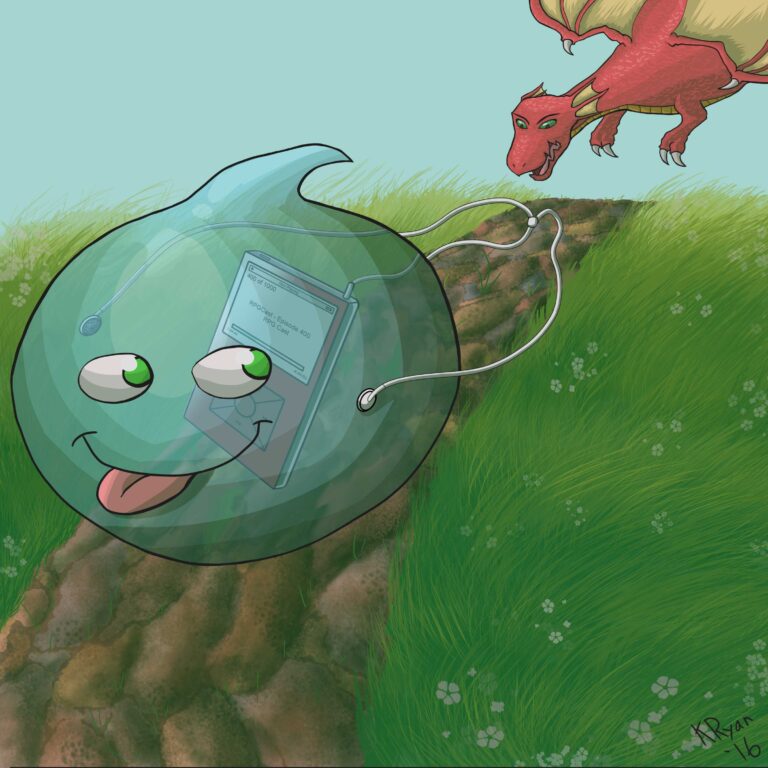For three summers, wildlife managers wrestled mountain goats in Washington state’s Olympic National Park, blindfolded them and then flew them into the far reaches of the state’s Cascade Range — an ambitious project to boost the goat population in an area where they once were common.
The researchers released a total of 325 goats into the Cascades from 2018 to 2020.
Today, most of the goats scientists had been tracking are dead.
“We were disappointed survival was as low as we found it was,” said Rich Harris, a now-retired state wildlife biologist who led the translocation project.
It’s difficult to know exactly how many mountain goats have survived because not all were tracked. But in a study published in September, Harris found that the probability of a translocated goat living from year-to-year was just 56%. In a sample of 217 translocated goats, 165 had died by the end of 2022.
The Everett Herald reported that wildlife biologists working with tribal nations could only find a few living mountain goats from the groups they had been tracking.
The goal of the effort was to foster a mountain goat rebound in the Cascades, where the species’ numbers have fallen dramatically after decades of overhunting. At the same time, the project would eradicate mountain goats from the Olympic Mountains, where they were not native, and, according to some officials, harmed plants specific to the region. In 2010, a hiker was gored and killed in a rare attack — the mountain goat was too familiar with the presence of people.
But the outcome of the project has revealed the degree to which climate change is rapidly transforming the rugged alpine landscapes of the West — and how humanity’s best-laid plans for wildlife increasingly face longer odds as weather extremes become more likely.

Researchers knew the relocated mountain goats would have a tough first winter and expected some to die. They now suspect that the effects of climate change have taken a toll on mountain goat survival rates — and native goats are struggling, too.
Off the bat, the translocated goats had it tough.
“You pick them up and drop them in unfamiliar territory, there’s initial trauma in the move. And finding your way in unfamiliar territory is going to be a challenge,” said David Wallin, a professor of environmental sciences at Western Washington University.
But that wouldn’t fully explain the poor results. So Harris conducted an analysis that included native mountain goats in the Cascades for comparison — the findings showed their population is declining, too.
“While the translocated animals didn’t do very well, they didn’t do any differently than the native animals,” Harris said, adding: “It’s been a dramatic decline. Weather factors related to climate are having an effect.”
His study found that changing weather conditions linked to climate change have correlated with mountain goats’ survival rate over the past 20 years. The goats benefit from a cool spring with steady snowmelt, which leaves alpine meadows rich with nourishment throughout the summer. But in recent years, they’ve received deep snowfall, a rapid melt in spring and arid summer droughts.
“The take-home message there is wow — I’m not sure how goats are going to be doing over the next decade, two or three,” Wallin said.
The Washington Department of Fish and Wildlife monitors a portion of the state’s mountain goat populations, and estimates of the goats regularly surveyed fell from 1,537 in 2015 to 917 in 2022. The state estimates there are fewer than 3,000 mountain goats in Washington.
#Mountain #goats #flown #home #Washington #survived





















+ There are no comments
Add yours